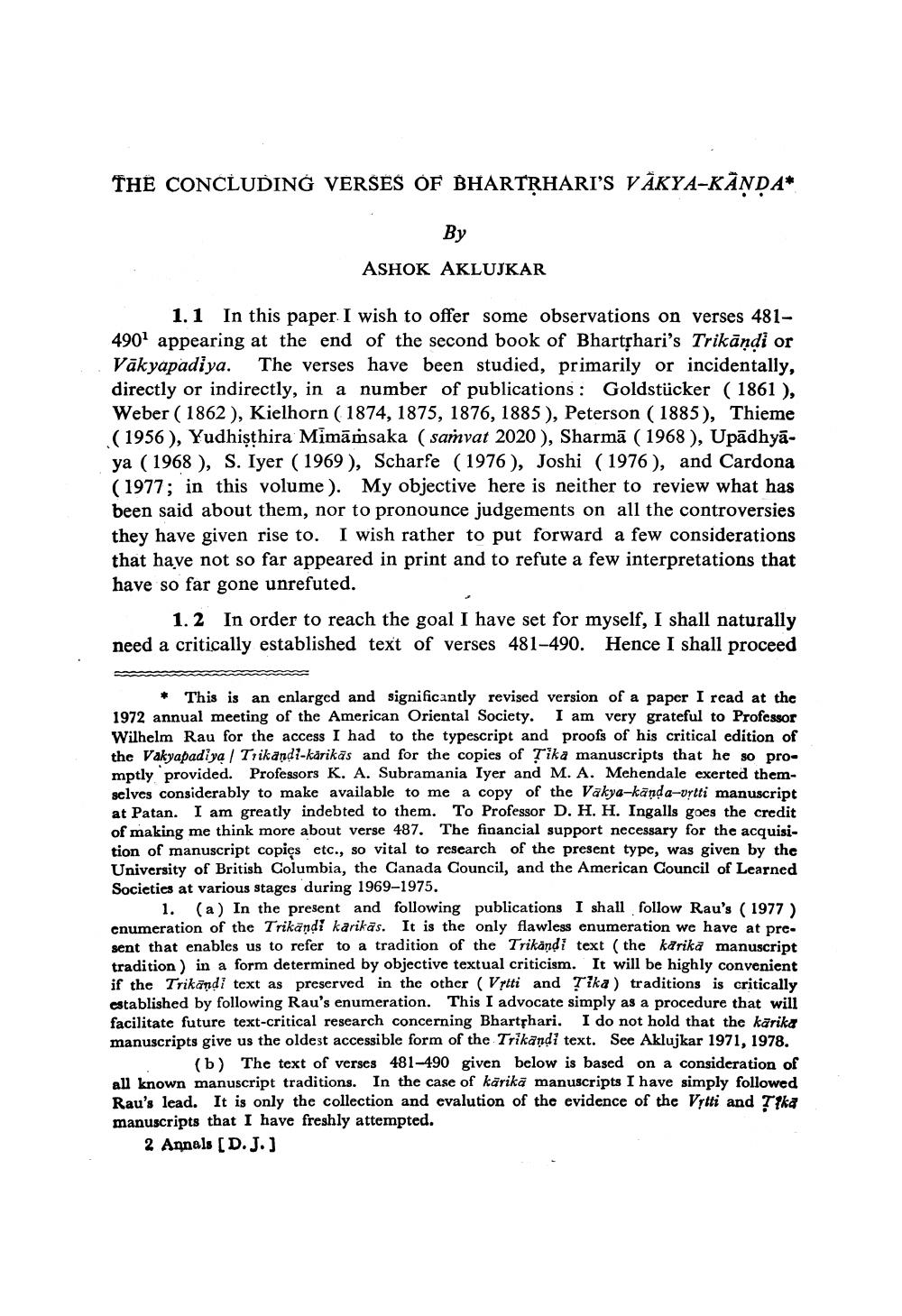Book Title: Concluding Verses Of Bhartrharis Vakya Kanda Author(s): Ashok Aklujkar Publisher: Ashok Aklujkar View full book textPage 1
________________ THE CONCLUDING VERSES OF BHARTṚHARI'S VĀKYA-KÄNDA* By ASHOK AKLUJKAR 1.1 In this paper I wish to offer some observations on verses 4814901 appearing at the end of the second book of Bhartṛhari's Trikāṇḍi or Vakyapadiya. The verses have been studied, primarily or incidentally, directly or indirectly, in a number of publications: Goldstücker (1861), Weber (1862), Kielhorn (1874, 1875, 1876, 1885), Peterson (1885), Thieme (1956), Yudhiṣṭhira Mimāmsaka (samvat 2020), Sharma (1968), Upadhyāya (1968), S. Iyer (1969), Scharfe (1976), Joshi (1976), and Cardona (1977; in this volume). My objective here is neither to review what has been said about them, nor to pronounce judgements on all the controversies they have given rise to. I wish rather to put forward a few considerations that have not so far appeared in print and to refute a few interpretations that have so far gone unrefuted. 1.2 In order to reach the goal I have set for myself, I shall naturally need a critically established text of verses 481-490. Hence I shall proceed * This is an enlarged and significantly revised version of a paper I read at the 1972 annual meeting of the American Oriental Society. I am very grateful to Professor Wilhelm Rau for the access I had to the typescript and proofs of his critical edition of the Vakyapadiya | Trikandi-kärikäs and for the copies of Tika manuscripts that he so promptly provided. Professors K. A. Subramania Iyer and M. A. Mehendale exerted themselves considerably to make available to me a copy of the Vakya-kaṇḍa-vṛtti manuscript at Patan. I am greatly indebted to them. To Professor D. H. H. Ingalls goes the credit of making me think more about verse 487. The financial support necessary for the acquisition of manuscript copies etc., so vital to research of the present type, was given by the University of British Columbia, the Canada Council, and the American Council of Learned Societies at various stages during 1969-1975. 1. (a) In the present and following publications I shall follow Rau's (1977) enumeration of the Trikandi karikas. It is the only flawless enumeration we have at present that enables us to refer to a tradition of the Trikandi text (the karika manuscript tradition) in a form determined by objective textual criticism. It will be highly convenient if the Trikandi text as preserved in the other (Vrtti and Tika) traditions is critically established by following Rau's enumeration. This I advocate simply as a procedure that will facilitate future text-critical research concerning Bhartṛhari. I do not hold that the karika manuscripts give us the oldest accessible form of the Trikandi text. See Aklujkar 1971, 1978. (b) The text of verses 481-490 given below is based on a consideration of all known manuscript traditions. In the case of kärikā manuscripts I have simply followed Rau's lead. It is only the collection and evalution of the evidence of the Vrtti and Ţika manuscripts that I have freshly attempted. 2 Annals [D. J.]Page Navigation
1 2 3 4 5 6 7 8 9 10 11 12 ... 18
